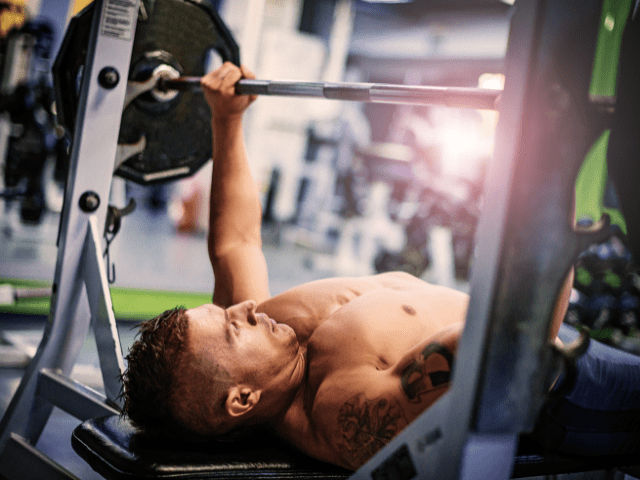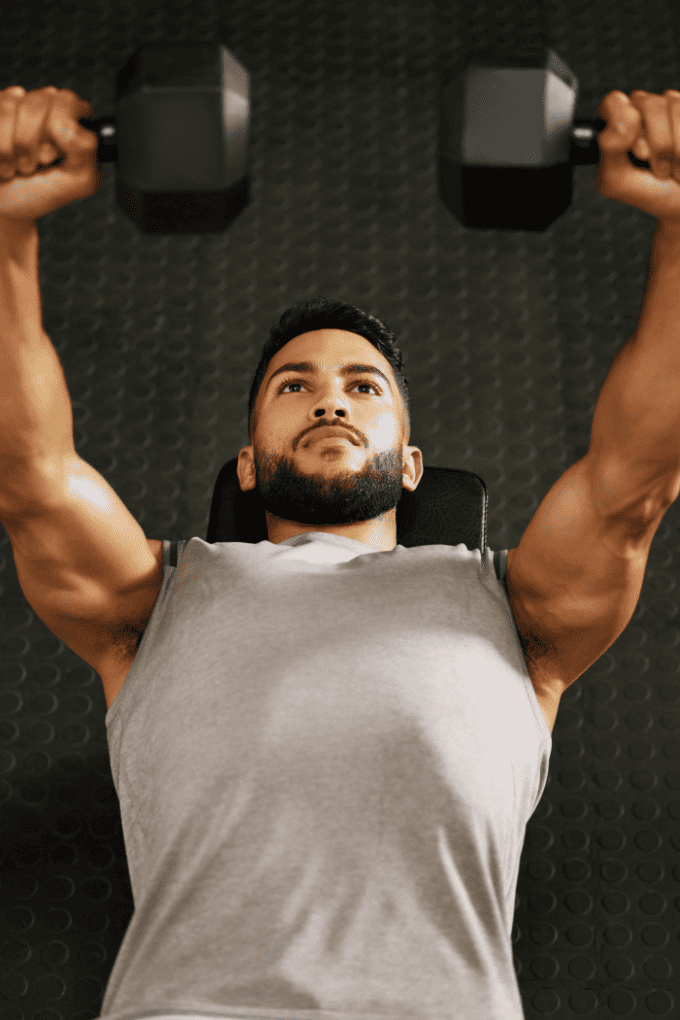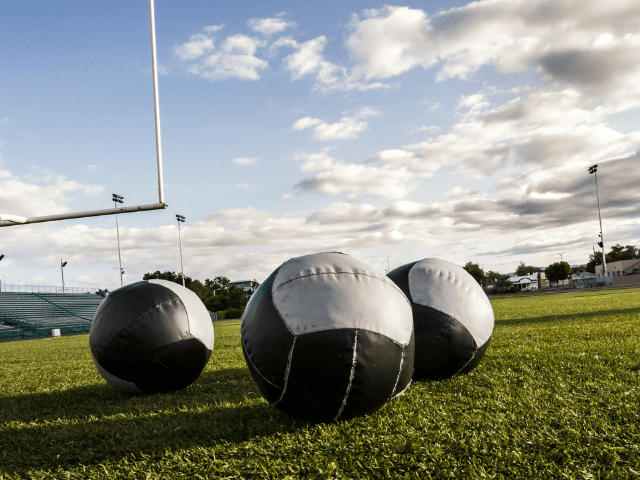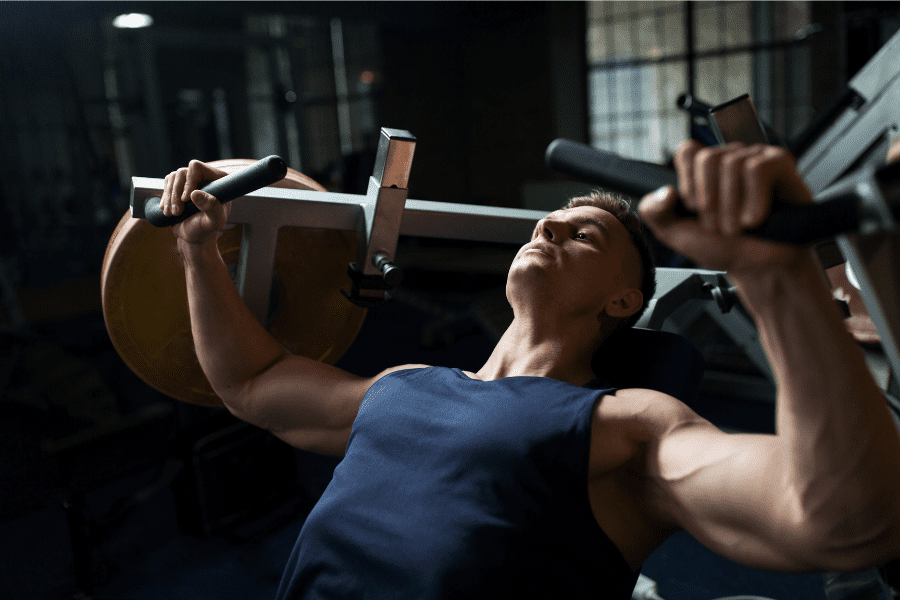11 Incline Bench Press Alternatives For Chest Development
Incline Bench Press is one of the most effective exercises for building upper body strength, specifically for the upper chest, shoulders and triceps.
However, sometimes you may find yourself needing an alternative for Incline Barbell Bench Press.
Maybe you don’t have a bench (or a barbell) or maybe you’re just looking to add some variety to your training program.
Whatever the reason, if you’re looking for an exercise to use as a substitute then you’re in the right place. I’m about to share with you what I consider the 11 best Incline Bench Press alternatives.
Incline Bench Press Alternatives
I’ve tried to include as much variety in this list of Incline Bench Press alternatives as possible. You’re going to find exercises that closely mimic Incline Bench Press along with exercises that look completely different.
There are exercises that utilize all kinds of different equipment – dumbbells, medicine balls and even a cable machine.
What all these exercises have in common, though, is that they are all great in their own way for developing upper body pressing strength and power.
Dumbbell Incline Bench Press

Missing the “barbell” in Incline Barbell Bench Press? My first Incline Bench Press alternative suggestion would be to switch to dumbbells and do Dumbbell Incline Bench Press to attack the upper chest.
You’ll get pretty much all the benefits of Barbell Incline and the Dumbbell version even comes with a few extra benefits as well.
Step-by-Step Instructions
- Start by setting an incline bench to an angle of about 30-45 degrees.
- Grab a dumbbell in each hand and sit on the bench. Position the dumbbells at shoulder height with your palms facing forward.
- Lie back on the bench, bringing the dumbbells to the sides of your chest. This is your starting position.
- Press the dumbbells upwards, extending your arms fully. The dumbbells should move in a slight arc, converging at the top without touching.
- Slowly lower the dumbbells back to the starting position in a controlled manner, feeling the stretch in your chest.
- Ensure your feet remain flat on the ground and your back is pressed into the bench throughout the movement.
Coaching Points
Do not let the elbows flare out away from the midline. The shoulders are incredibly vulnerable in these positions and the sheer force placed on the shoulders will lead to injury if the technique is not made a priority.
Bench Press

We can’t talk about Incline Bench Press alternatives without mentioning regular flat Bench Press, right?
Bench Press won’t target the upper chest the same way as Incline Press, but it’s still going to be one of the best Incline Bench Press alternatives simply because it’s one of the best upper body movements, period.
Step-by-Step Instructions
- Set the barbell on a bench press rack and load it with the desired weight.
- Lie on the bench with your eyes directly under the bar. Plant your feet flat on the floor.
- Grasp the bar with hands slightly wider than shoulder-width, palms facing away from you.
- Lift the bar off the rack and position it above your chest with arms fully extended.
- Lower the bar to your mid-chest, keeping your elbows at a 75-90 degree angle.
- Push the bar back up to the starting position, fully extending your arms.
Coaching Points
Always have a spotter, regardless of the weight. Yes, even for the lighter sets.
Do not let the elbows flare out away from the midline. The shoulders are incredibly vulnerable in these positions and the sheer force placed on the shoulders will lead to injury if the technique is not made a priority.
When you bring the bar down, lightly tap the chest and then press back up. Do NOT bounce it. I can’t tell you how many guys I’ve watched Bench Press like they were mad at their sternum.
Dumbbell Bench Press

Don’t have an adjustable bench? Switch to a flat bench and do Dumbbell Bench instead (or even on the floor if necessary).
Step-by-Step Instruction
- Choose appropriate dumbbells and lie back on a flat bench, holding them above your chest.
- Hold the dumbbells with a neutral or pronated grip, palms facing forward.
- Begin with the dumbbells at chest height, elbows bent at about 90 degrees.
- Press the dumbbells upward, extending your arms fully above your chest.
- Hold for a brief moment at the top, dumbbells almost touching each other.
- Lower the dumbbells back to the starting position, controlling the movement.
Coaching Points
When your set is done, do not freely drop the dumbbells without checking your surroundings. You could drop the dumbbell and it might hit a person nearby. Or your could drop your dumbbell and crush your fingers on a dumbbell that was left next to your bench.
Feet Elevated Push-ups

Short on equipment? Give Feet Elevated Push-ups a try.
Push-ups, and Push-up variations, are often overlooked chest exercises because they’re considered “too simple”. Let me tell you – simple works.
Step-by-Step Instruction
- Find a stable elevated surface like a bench, box, or step. Place your feet on this surface.
- Position your hands on the ground slightly wider than shoulder-width apart. Your body should form a straight line from your head to your heels.
- Engage your core and squeeze your glutes to maintain stability throughout the movement.
- Begin by lowering your body towards the ground by bending your elbows, keeping them at a 45-degree angle to your body.
- Descend until your chest is just above the ground or as far as your mobility allows.
- Push through your hands, extending your arms and returning to the starting position.
Coaching Points
Take your time and master the push-up. The benefits of doing sound push-ups will pay dividends for your shoulder health and the potential to maximize your upper body strength.
Keep the elbows at a 45-degree angle. For maximal chest, shoulder, and rotator cuff engagement, do not let the elbows flare out away from the middle. Also, do not let the elbow hug right next to the torso.
Landmine Press
If you have a landmine, Landmine Presses are an excellent exercise both as an alternate pressing movement and a unique exercise to add some variety. They have a very similar movement pattern to Incline Bench Press, but they will also incorporate more core and shoulder stability.
How To
- Set up a landmine attachment with a barbell.
- Grab the end of the barbell and start with it at chest level.
- Feet should be shoulder-width apart with knees slightly bent and core braced.
- Remove one hand from the bar and then press the bar to full extension with the other arm.
- Lower the bar back to chest level under control.
Coaching Points
Keep the core braced and maintain a neutral torso. If you find yourself leaning back and arching the low back, lower the weight if needed and correct your form.
If you don’t have a landmine attachment, don’t worry! Here is how you can make your own DIY Landmine Attachment with just a tennis ball.

Tired of coming up with your own workouts? But don’t want to pay an arm and a leg?
I post workouts 5 days a week right here. (Did I mention they’re free?)
Floor Press
I didn’t have a bench the first year I started working out in my garage. If that sounds familiar, consider Floor Presses as an Incline Bench Press alternative. They’re more like a flat bench and not as targeted on the upper chest, but they’re a very effective horizontal pressing movement if you don’t have a bench.
Step-by-Step Instructions
- Set your barbell up in the rack at the proper height to be able to rack and unrack the bar safely*.
- Lay on your back with knees bent, feet flat on the floor.
- Engage your lats and set yourself up basically the same as you would for Bench Press.
- Grab the bar using a close grip**, hands right about on the edge of the knurling.
- Unrack the bar, lower it down until the triceps lightly tap the floor and then press it back to extension.
Coaching Points
*Always test your barbell height with an empty bar. I’ve been doing Floor Presses for twenty years now and can still struggle with nailing the best height on my first try.
**Floor Press is generally done using a close grip to emphasize the demand on the triceps, however, you can go with a wider grip if you choose to.
Dips

One of my all-time favorite exercises for developing pressing strength is Dips.
They’re not as targeted for the upper chest as some of the other options here, but they’re incredibly effective at building chest and triceps strength.
Step By Step Instructions
- Attach your dip rack to your rack. This process will vary based on your rack and dip attachment. Follow the manufacturer’s instructions closely.
- Set your dip rack just above waist height. This will allow enough room for your feet not to hit the ground while doing reps, but not so high you feel you have to jump up into your first rep.
- Starting position is hands on bars, arms extended, knees slightly bent and feet crossed.
- Descend down by bending the elbows and slightly leaning forward.
- Lower yourself under control until the triceps become parallel with the ground and then drive yourself back up to the starting position.
Coaching Points
The biggest mistake I see with dips is a poor range of motion. If someone is struggling to be able to do reps, the easiest solution is to simply not lower yourself into a full rep, but this is incorrect. Use a band or a spotter to help you through the full range of motion.
Medicine Ball Chest Pass

Medicine Ball Chest Pass is an explosive version of an Incline Bench Press. If you’re wanting to add some power development into your program, Med Ball Chest Pass is one of the best Incline Bench Press alternatives to accomplish just that.
How To
- Grab a medicine ball and a partner (or a solid wall)
- Start on your knees, sit back onto your calves and hold the ball at your chest.
- Explosively drive forward with the hips and throw the ball forward to your partner.
- The forward hip extension should cause you to fall forward.
- Catch yourself with your hands and then explosively push yourself back up to your starting position.
Coaching Points
Med Ball Chest Passes can be done from the knees as described above, but can also be done from a standing position. Regardless of what starting position you use, brace the core and be explosive!
Incline Dumbbell Fly

Incline Dumbbell Flys won’t build strength nearly as well as Incline Bench, but they can be perfect to add some variety to your workout.
Step-by-Step Instruction
- Begin by setting an incline bench to an angle of about 30-45 degrees.
- Sit on the bench with a dumbbell in each hand, then lay back, positioning the dumbbells above your chest with arms slightly bent.
- With a slight bend in your elbows (imagine hugging a large tree), lower the dumbbells out to the sides in a wide arc. Ensure a controlled motion and feel the stretch in your chest.
- Once you’ve reached a point where you feel a good stretch, reverse the motion by squeezing the chest muscles and bringing the dumbbells back to the starting position.
- Ensure you maintain the slight bend in your elbows throughout the movement, and don’t let the dumbbells touch at the top.
Coaching Points
Remember as you move your bench up, the more you are engaging the shoulders and less chest. Be sure your angle matches the goals you’ve set for pressing.
Incline Dumbbell Fly should not be done with heavy weights. Stay relatively light, keep the movement very controlled and focus on the stretch.
Cable Crossover Flys

If you have access to a cable crossover machine (hotel gym maybe?), then Cable Crossover Flys can be a great alternative. Like Incline Dumbbell Fly, Cable Crossovers aren’t as effective at developing pure strength, but don’t let that stop you from getting that chest pump at the end of your workout.
How To
- Place single-handle attachments on both sides of a cable crossover machine.
- Stand with feet shoulder-width apart and a slight forward lean through the torso.
- Hold handles with your arms spread and a slight bend in the elbow.
- Press the cables forward until your hands touch. (crossing the arms in the front will add more emphasis to the upper pectorals)
- Slowly bring the hands back to the starting position and repeat.
Coaching Points
Make sure both pins on each side of your machine are on the same notch.
Plate Loaded Incline Bench

My final recommendation for an Incline Bench alternative is Plate Loaded Incline Bench. Most college weight rooms and big commercial weight rooms will have plate-loaded equipment from Hammer Strength or a similar company.
If you have access to one of these isolateral machines, they can be a great substitution for Incline Bench.

Get Shredded… For Free
Get a free workout Monday through Friday, posted right here on Horton Barbell. These workouts are designed to help you get strong, in shape and look great at the beach!
Final Thoughts
Incline Bench Press is an excellent exercise for developing a strong upper chest, shoulders and triceps, but sometimes Incline Bench just isn’t an option. You may not have the proper equipment available to you or at other times you might just be looking to add some variety to your training program.
In these situations, you’ll need an Incline Bench alternative and I hope that at least one of the alternative exercises I’ve listed here fits what you were looking for.

